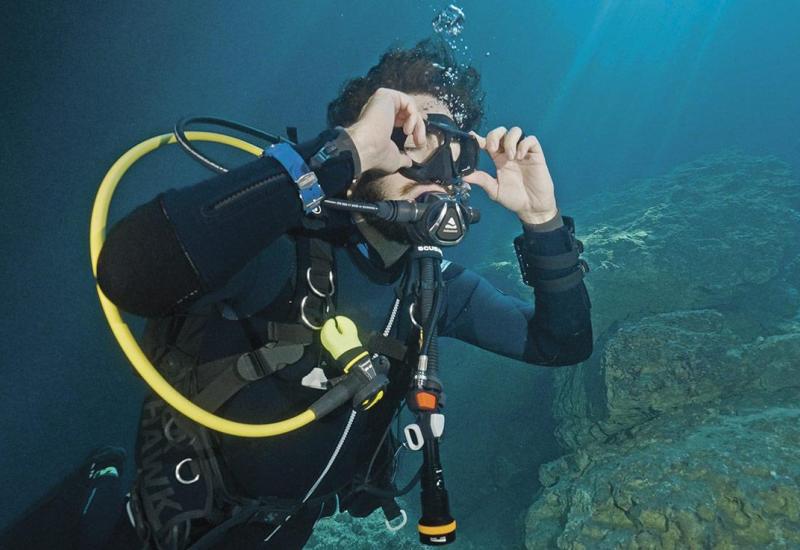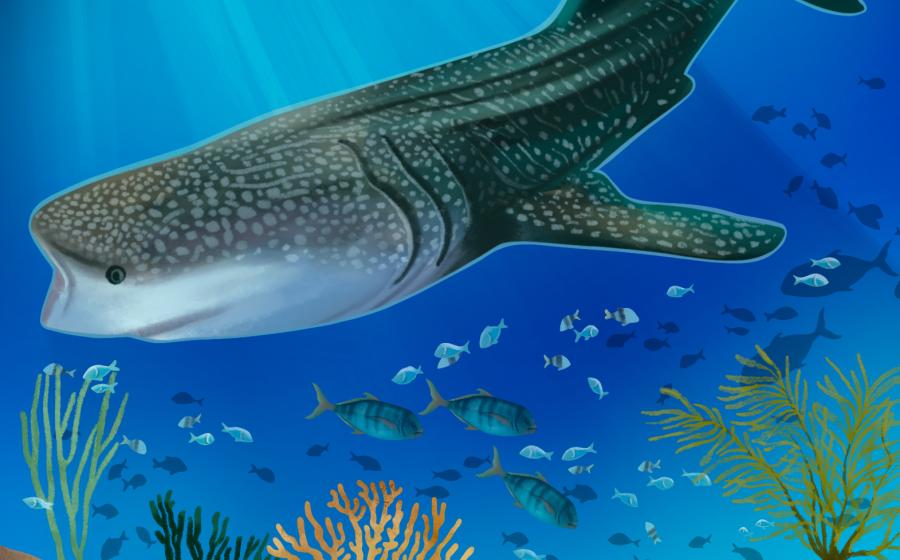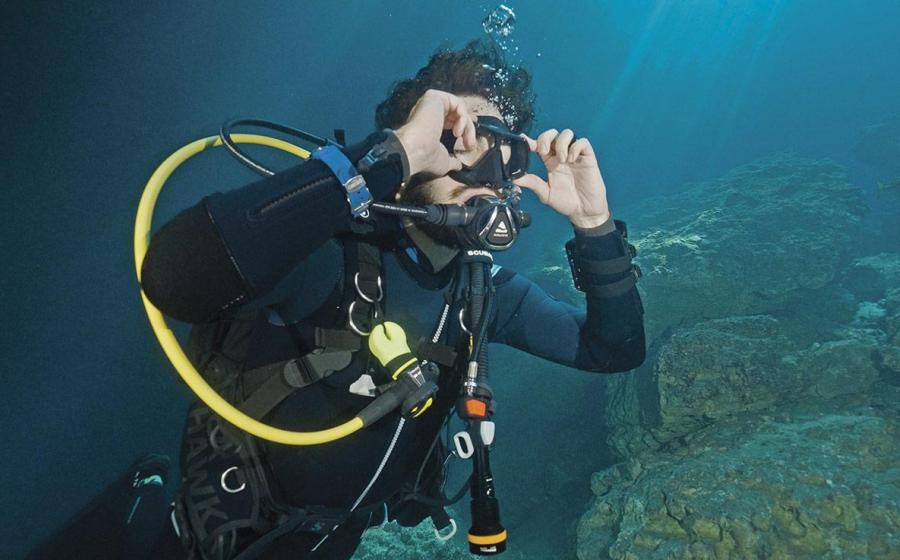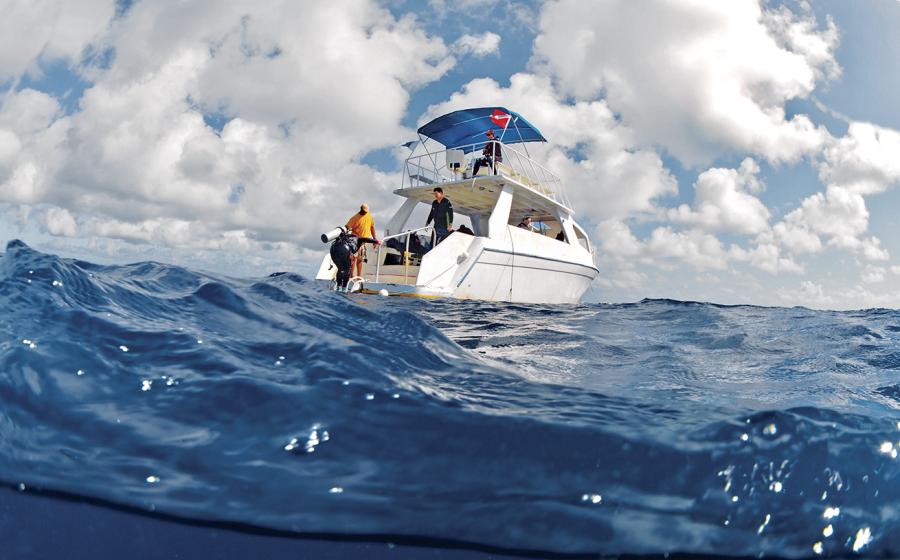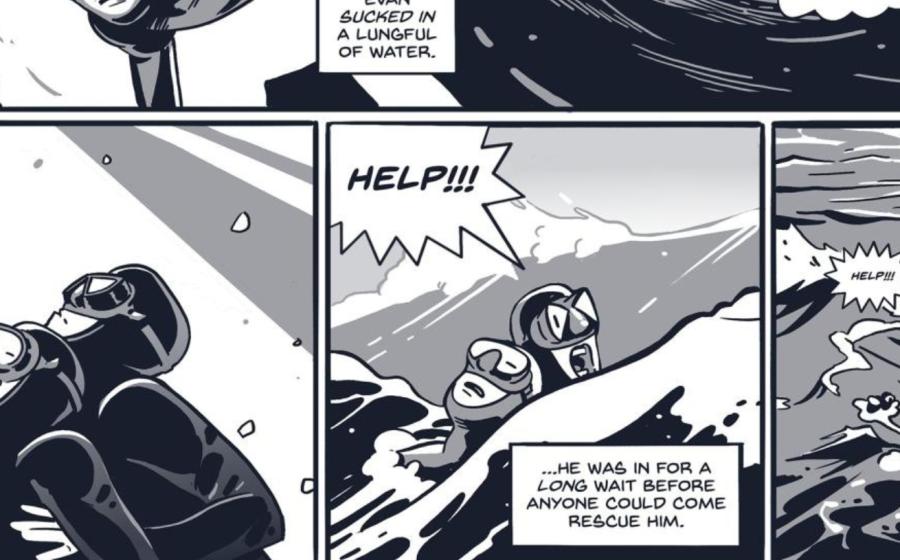How To Photograph Schooling Fish
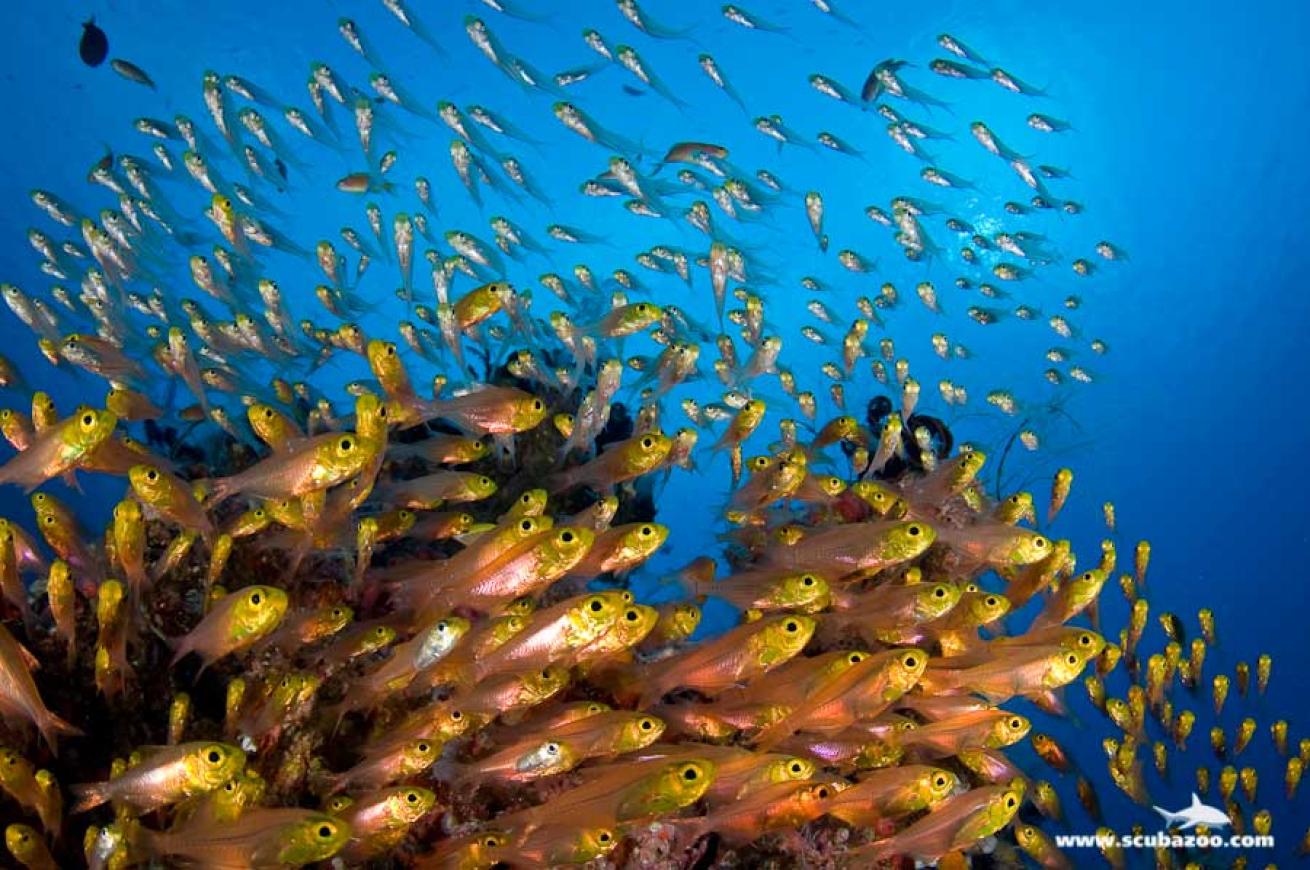
Christian Loader/ScubazooSETTINGS: Nikon D300, Tokina 10-17mm, 1/200s, f8, ISO200.
Glassfish form schools very close to the reef, next to coral bommies and under table corals, and are very easy to get close to.
One of the main reasons people love diving is being able to easily observe the vast range of fascinating marine life, and for many there is nothing more satisfying than swimming through a large school (aka shoal) of fish on a dive. Schooling fish have provided some of my most memorable moments underwater, like swimming in the eye of a swirling 'tornado' of barrcuda; millions of schooling baitfish blocking out the daylight as they're hunted by large jacks overhead; or hundreds of surgeonfish grazing on a coral reef while being chased away by other species.
Schooling fish are found in various underwater habitats, from a small school of glassfish sheltered by a coral bommie, to a school of catfish feeding on the sand, to a huge school of tuna passing in the blue. Schools come in all colours and sizes, and different species have their own schooling characteristics that need to be understood when attempting to capture the best shots of them.
Want to see some of Christian's work? Check out his Photo Gallery: Schooling Fish.
Here are some useful tips to get you started:
Equipment
Shooting with a DSLR, the most common choice of lens and port for shooting schooling fish is a wide-angle lens with a large dome port. Ultra-wide fisheye lenses (10.5mm, 15mm, or 16mm for example) are great for shooting schools you can get close to, and also really large schools such as barracuda or sardines. The best choice would be a fisheye zoom lens like the Canon 8-15mm, or Tokina 10-17mm which are the most versatile. Rectilinear wide-angle zoom lenses such as a 12-24mm, 14-24mm, 17-35mm, 16-35mm etc. may be more preferable for schools that are a bit more shy and difficult to get very close to.
Most photographers will know how annoying it is being caught out with a macro set-up when a big school of fish come along – but you have to make the most with what you've got! Use your macro lens to capture tighter compositions, and from further away it should be possible to shoot a head-on shot of an approaching school (more difficult with a wide lens), focusing on one fish in particular with others blurred softly in the background. Certain smaller species of schooling fish can often be seen grazing on the reef, such as surgeonfish, parrotfish or wrasse for example, which is also a good situation for shooting macro.
When using strobes for shooting wide-angle, position them far away and slightly behind the housing's port, on long strobe arms, and point the strobes slightly outwards. For a school that's very close to the camera, you'll need to adjust the strobe positions for more even lighting.
Settings
Silvery fish reflect strobe light so use a low strobe power setting to avoid harsh, 'burnt' highlights. Colourful schooling fish on the hand reflect much less light, so you'll need to use a high strobe power to make their colours really stand out. In very shallow, clear water it may be a good idea to turn off your strobes, set your camera's white balance manually on a light rock, patch of reef or sand, and then turn your strobes on to a low power and use them simply as a 'fill light' – but be careful as too much strobe light in this situation will give a pink/red tint to the whole image (which to a degree can be corrected when editing your images later).
In general, images of schooling fish require a fast shutter speed of between 1/100s – 1/250s, while adjusting the camera's f-stop to expose for the ambient background water. A fast shutter speed is needed for capturing fast-moving schools, or any action such as predators amongst the school. Capturing a sunburst, or a typical silhouette shot like a schooling 'tornado' of barracuda for example, generally requires a fast shutter speed and high f-stop as you want to avoid an overexposed surface. In deeper, darker water, or for slow-moving schools, a slower shutter speed can be used to brighten up the background. For a bit of creativity, and to add movement, you could use a much slower shutter speed such as 1/10s – 1/30s, a high f-stop, high powered strobes, with the camera's flash set to 'rear curtain sync', while panning with the school as you take the shot – this creates motion blur, and can really liven up an image of schooling fish.
**Getting the shot **
Do your research when you're off on a dive trip, and ask your local dive guide about which sites are best to see schools. Schools often stay in the same area allowing for repeated dives so you can get the best shots, and the best time to dive a particular site for schooling fish can depend on the time of day, and currents – if you time your dive correctly with the optimal conditions, then you could be lucky and see predators attacking the school for example; tight 'tornado' formations such as with barracuda or jacks; feeding or mating behaviour; or maybe just for shooting with the best natural light such as in the late afternoon. Wrecks are often a sheltered haven for schools of fish, so ask your dive centre about any wrecks in the area.
Apart from immense schools of barracuda, sardines, or baitfish for example where you would want to shoot from further away to capture the vast expanse of fish, in most situations you'll want to get as close as possible to the school to get the best shots, and ideally get a head-on shot of the school approaching you. This requires a fair bit of patience and a lot of swimming around, so you may need to spend a long part of your dive with the school just watching its pattern of movements and how they're behaving. Don't just charge into the middle of a neatly-formed school, as you'll only end up with a shot of a hundred fish butts as they scatter in all directions away from you!
Fish are scared of our bubbles, and if you're an experienced diver or photographer you'll know that holding your breath for a few seconds is the best way to get slightly closer to fish without spooking them, as well as avoiding any quick, sudden movements. Holding your breath for a few seconds is also essential if you're trying to get an overhead shot, like the silhouette of a school. (However, this goes against the number one rule in diving which is to “never hold your breath”, so beginner divers/photographers take note!).
If a school of fish is close to or just above the reef or seabed, find a nice patch of the reef, or a coral for example to use as your foreground, and be sure to adjust your settings to expose correctly for this foreground. You're still shooting the school remember, so compose your image so the coral doesn't take 'center stage', but rather just compliments the image as a whole. This is a great way to add some rich colour to shots of silvery, colourless schools of fish. You may find it helpful to adjust one strobe for foreground lighting, while the other adjusted differently for the fish further in the background.
Have a chat with your dive buddy beforehand if you want them to help corral loosely scattered fish into tighter schools for a better shot, but be aware that getting your buddy to do this too much can simply be harassment (for the fish, and your buddy!) and the school could just disappear. Tell your buddy how to avoid spooking the school.
If you want to use your buddy as a designated underwater model in your schooling fish shots, then you'll need to chat with them before the dive and go through various hand signals you'll use to direct them. Adding a diver to your shot can nicely compliment a school of fish, but it's essential the diver be in the right part of the frame, and have good 'form' ie. a diver in the background, facing side-on with legs and fins fairly straight, not swimming in the background towards you which makes them look a distracting, nondescript blob.
An impressive school of fish is a captivating sight for any diver, and one that lures us underwater photographers to shoot them endlessly until we're low on air. Compared with photographing a small individual fish on a reef, shooting a large, slow-moving school allows you to shoot from numerous different angles, try a range of compositions with different foregrounds and natural light from different directions, so there's a great number of opportunities you can relish when it comes to shooting schooling fish. Remember to be patient in your approach, and by following these tips I hope you'll capture some stunning shots too.
Want to see some of Christian's work? Check out his Photo Gallery: Schooling Fish.
Christian Loader (31, UK) is a full-time professional photographer for Scubazoo Images (_www.scubazoo.com). He has worked extensively throughout SE Asia as an underwater videographer and photographer for Scubazoo since 2007, and lives in Kota Kinabalu, Sabah, Malaysian Borneo.
_

